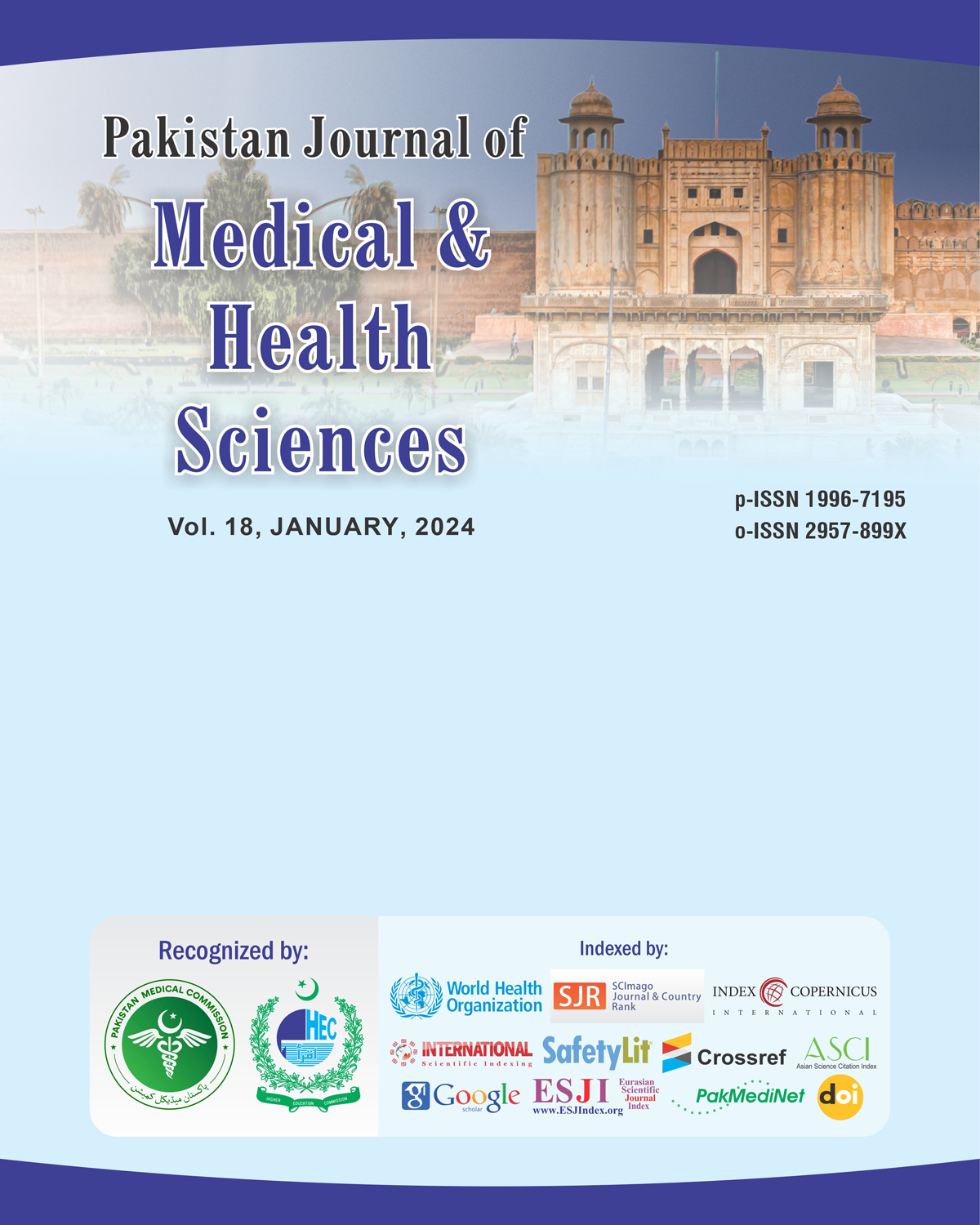Determine the Treatment Outcomes of Severe Acute Malnutrition in Pediatric Population by Using Formula F100 Therapeutic Feed
DOI:
https://doi.org/10.53350/pjmhs02024181231Abstract
Objective: To determine the prevalence and treatment outcomes of severe acute malnutrition in children.
Study Design: Prospective study
Place & Duration of Study: Department of Paediatrics, Niazi Welfare Foundation Teaching Hospital,Sargodha from 1st July 2019 to 31st December 2019.
Methodology: One hundred and fifty patients of both genders presented with severe acute malnutrition were included. Patient’s ages were ranging from 2 months to 48 months. Patient’s demographics including age, sex, malnutrition type and address were recorded after taking informed consent from patient’s parents/guardians. Presentations on admission were recorded. F75 and F100 therapeutic feed were given to all the patients (WHO Guideline for malnutrition). Outcomes were recorded.
Results: There were 80 (53.33%) male patients while 70 (46.67%) were females. Sixty eight(45.33%) patients were of age less than 10 months and 82 (54.67%) were of age above 10 months. From 150 patients, 134 (89.33%) patients were marasmus and 16 (10.67%) patients were kwashiorkor. Mean weight gain by using F100 was 7.26±3.45 gm/kg/day. 92% patients were recovered and 8% died during treatment. The most common presentation was diarrhea.
Conclusion: The use of F75 and F100 therapeutic feed for the treatment of severe acute malnutrition was very effective with low rate of mortality.
Keywords: Severe acute malnutrition (SAM), Pediatric population, F75, F100 Feed, Treatment, Outcomes
Downloads
How to Cite
Issue
Section
License
Copyright (c) 2024 Sajid Hussain Sherazi, Sadaf Liaqat, Rabia Nisar, Maria Khalid, Rebeya Hashim

This work is licensed under a Creative Commons Attribution 4.0 International License.


